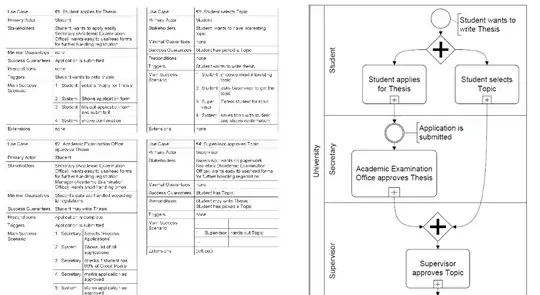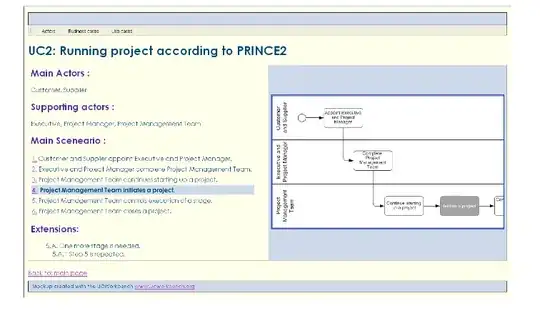I asked this question on stackoverflow, but it seems this question is not suitable there, so I post here for discussion.
BPMN (Business Process Modeling Notations) is used for modeling business process by visualization, thus making intangible ideas become physically concrete through the expression of BPMN diagrams. The question is, how do I organize the BPMN with the UML.
Initially, I thought of two ways to organize use cases and business process diagram:
1 to one/many: By mapping each step (
stephere means each node in the BPMN digram) in the business process diagram with one or several use cases. Each use case is mapped with relevant several class diagrams/component diagrams (I prefer this one, since you can encapsulate a set of classes into one component which has input and output), several sequence diagrams (optional). After you have class diagrams/sequence diagrams, code is written/generated based on the model.Many to one: By mapping several steps into one use case. The subsequence steps are the same.
Many to many: For example, one step in the business process can be mapped with two or more use cases, and the same two or more use cases can be mapped with other steps.
The above methods can be done by the modeling tool, and in my case, I use Enterprise Architect from Sparx System. I discover it recently and I am using its trial, but I will buy it in the future. I can organize many use case diagrams with one step of the BPMN diagram, and can click to view the necessary use cases. However, I don't if it supports many to many cases.
After thinking my own method for organizing BPMN and Use Cases, I searched the Internet, and found two other papers, each suggest the following method:
Turn each use case into each step of BPMN diagrams: To visualize how refined use cases fit into the business process. I like this approach, since the business process with steps can be modeled, and later each step is turned into a use case. One step is one use case. This is the same with my one to one mapping above. Original presentation is here: Visualizing Use Case Sets as BPMN Processes

Each use case is exactly a business process: Each step in the use case is each step of the business process. Original paper is here: Describing Business Processes with Use Cases

It seems to me that there's not standardized way of gluing these artifacts (BPMN and Use Cases and other digrams) together. Maybe it's a management problem and rely more on creative usage rather than follow a formal steps. What are the usage of these diagrams together?